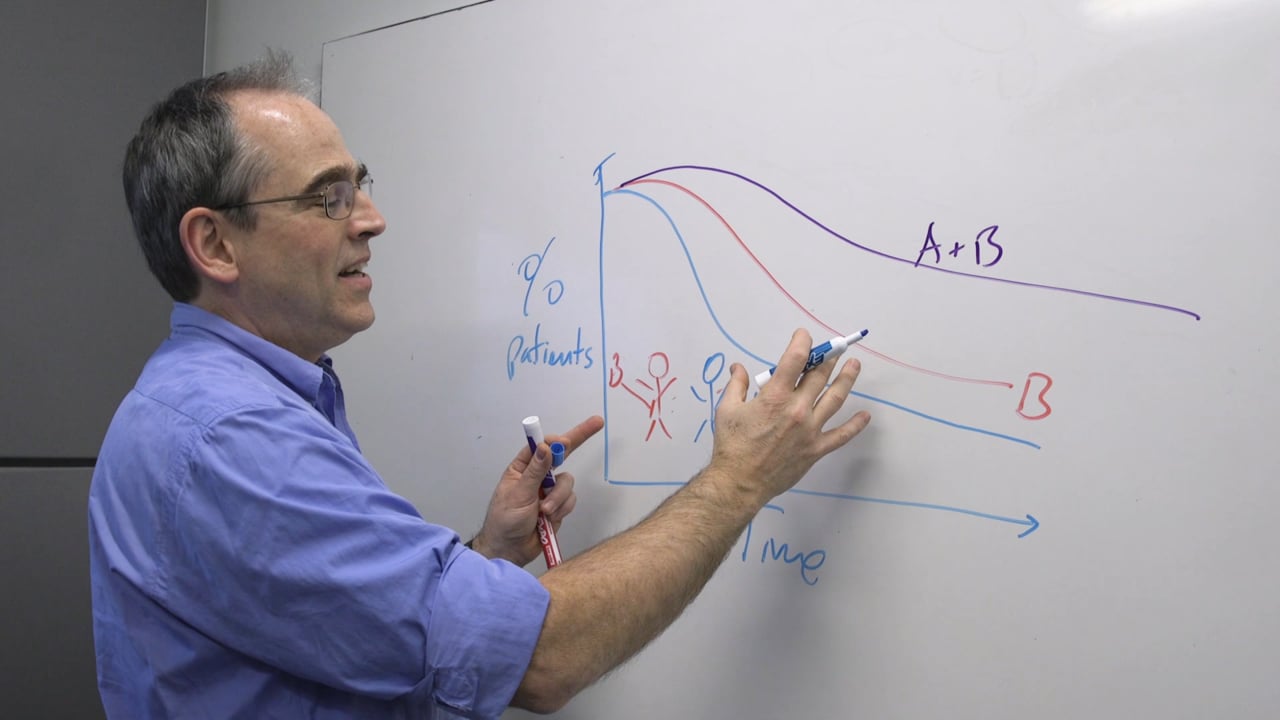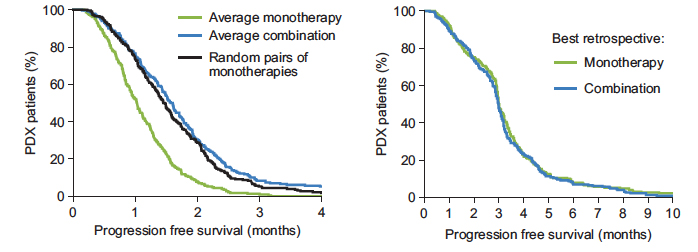
The efficacy of many FDA-approved cancer drug combinations is not due to synergistic interactions between drugs, but rather to a form of “bet hedging,” according to a new study published by Harvard Medical School researchers in Cell on Dec. 14.
Reanalyzing data from 15 clinical trials, the researchers show that independent action—in which drugs do not enhance each other’s effectiveness—can accurately explain gains in survival for most combination cancer therapies when compared to single-drug treatments.
“Many patients are likely responding to only one of the drugs, and the other may be doing little to nothing but generating toxic side effects” - Adam Palmer
Genetic variations in cancer from one person to another lead to differences in drug response, the researchers said, and treating populations of patients with multiple drugs boosts the likelihood that a patient will benefit from at least one of them.
This finding differs from current hypotheses about drug interaction, which have commonly explained benefits as arising from drug synergy. However, this should not be interpreted as diminishing the value of combination therapy for patients, the team cautions.
Instead, they argue that exploiting drug independence represents a powerful approach for developing better combinations and treatment strategies in the absence of a complete understanding of disease.
A focus on maximizing the odds of a patient responding to at least one drug, for example, could support treating patients with drugs sequentially instead of simultaneously, thereby reducing compounding side effects, enabling higher dosages when effective and potentially lowering treatment costs.
“Our study provides a conceptual framework for rethinking how and why drugs should be given in combination,” said senior study author Peter Sorger, the Otto Krayer Professor of Systems Biology at HMS and director of the Harvard Program in Therapeutic Science and the Laboratory of Systems Pharmacology.
“Independent action offers a simpler and more satisfactory explanation that can help physicians use existing drugs better, help patients have fewer adverse effects and help drug companies develop better combinations that fully realize the promise of precision medicine,” Sorger said.
This results underscore the importance of developing new methods to identify which patients respond best to which drug and to maximize the odds of treatment success, the authors said.
“Positive results for combination cancer therapies have commonly been interpreted as patients needing two or more drugs to shrink their tumors and for them to get better, but our analysis suggests this is often not the case,” said study author Adam Palmer, research fellow in therapeutic science at the Laboratory of Systems Pharmacology.
“Many patients are likely responding to only one of the drugs, and the other may be doing little to nothing but generating toxic side effects,” he said.




